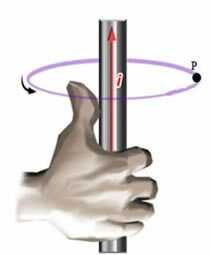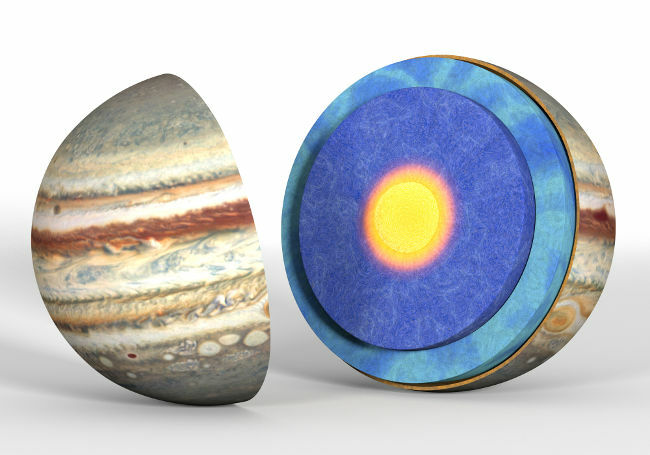When faced with a problem involving the magnetic field generated by an electric current, we often find it difficult to determine the direction and direction of the induction vector.  .
.
According to the Oersted Experiment, when placing a compass next to a wire carried by an electrical current, the needle of that compass deviates. Thus, Oersted concluded that, like magnets, every electric current generates, in the space around it, a magnetic field.
The big question is: What is the direction and direction of deviation of this needle?
The easiest way to determine this direction and direction is to use the right hand rule.
Look at the figure below:

The thumb is indicating the direction of the electrical current that is passing through the wire, while the other fingers are bent around the conductor in a region where the compass would be placed. We note here that the fingers indicate the rotation of the north pole of the compass needle.
This sense is the same as the magnetic induction vector  , generated by electrical current.
, generated by electrical current.
See the examples:
1) A conductor, when traversed by an electric current i, is located, on the plane of your monitor screen, close to a point P (to the right of the conductor).
Do not stop now... There's more after the advertising ;)

We conclude that the vector  at point P is entering the plane of the screen. The representation of the vector entering the screen plane is:
at point P is entering the plane of the screen. The representation of the vector entering the screen plane is: 
2) The conductor carried by the electrical current i and the point P (to the left of the conductor) are located on the same plane as your monitor screen. By the right-hand rule, we can conclude that the vector  , at point P, is leaving the plane of the screen.
, at point P, is leaving the plane of the screen.

The representation of the vector coming out of the screen plane is:  .
.
We can then conclude that the magnetic field vector  is perpendicular to P. In others,
is perpendicular to P. In others,  it is perpendicular to the plane of the flat palm of the right hand.
it is perpendicular to the plane of the flat palm of the right hand.
By Kléber Cavalcante
Graduated in Physics
Would you like to reference this text in a school or academic work? Look:
CAVALCANTE, Kleber G. "The Right Hand Rule"; Brazil School. Available in: https://brasilescola.uol.com.br/fisica/a-regra-mao-direita.htm. Accessed on June 27, 2021.



